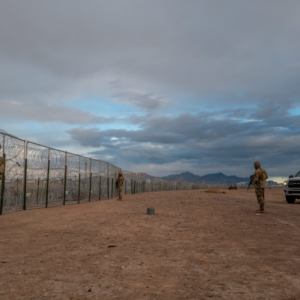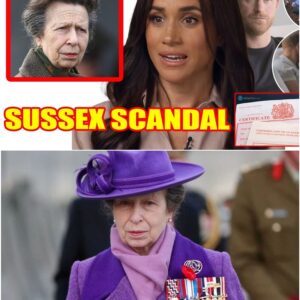Proven Time and Again: Prince Harry and Meghan Markle’s Credibility Under Scrutiny

In recent years, Prince Harry and Meghan Markle have been at the center of numerous controversies, with accusations of dishonesty and media manipulation surfacing repeatedly. Critics argue that their actions prioritize personal grievances over genuine advocacy for justice, casting doubt on their integrity and motives.
The ongoing conflict between Prince Harry and the media highlights a significant struggle for truth and justice. This battle resembles a David versus Goliath scenario, showcasing the vulnerability of individuals against powerful media corporations. The media’s intrusive tactics, including phone tapping and leaking personal information, raise serious ethical concerns about privacy and have led to a broader discussion on media accountability. Harry’s struggles with media portrayals and financial issues with platforms like Netflix and Spotify underscore the challenges faced by public figures in protecting their image and livelihood.
A controversial relationship between ITV and Harry suggests a bias in media coverage, with ITV appearing to support Harry while neglecting other royal family members. This perceived bias raises questions about media integrity and the fairness of coverage that Harry and Meghan receive compared to other royals. Critics argue that Harry and Meghan’s narrative often relies on falsehoods, particularly concerning their marriage, leading to a broader discussion on public perception and media involvement. The focus on personal grievances, such as claims about their wedding and family disputes, tends to obscure the truth and accountability.
Harry’s recent legal victories are framed as personal triumphs against the media, yet the context reveals a deeper vendetta rather than a genuine pursuit of justice. This highlights the blurred lines between personal and public battles. The issue of phone-hacking scandals is often misrepresented, simplifying complex problems into sensational narratives. Many celebrities failed to secure their privacy due to negligence rather than sophisticated intrusions, complicating the narrative around media misconduct.
The discussion also touches on severe media scandals surrounding public figures, specifically mentioning the phone-hacking scandal and its implications on the reputation of the media. Critics argue that the media’s treatment of Princess Diana was more damaging than current scandals, illustrating a history of media misconduct. The way the BBC handled her story, for instance, reflects broader ethical issues within the industry. The relationship between Princess Diana and the media is complex, with some suggesting she navigated and manipulated media narratives to her advantage.
Amidst this discussion, the ongoing regulations established in the UK and Europe to protect individuals from media harassment are highlighted, showing a societal response to past media exploitation. However, these measures often fall short of addressing the root causes of media misconduct.
In an unrelated yet telling segment, a video discussing the importance of a high-quality trimmer designed for body grooming emphasizes its effectiveness for sensitive areas, highlighting features such as waterproofing, multiple length settings, and ease of use. While this may seem out of place, it underscores the pervasive nature of consumerism and how even serious discussions are often interspersed with commercial content.
Harry’s criticism of his family in a recent interview reveals a complex relationship fraught with personal grievances and public expectations. The irony of Harry criticizing his family’s service while having distanced himself from royal duties highlights the tension within the monarchy. This contradiction shapes public perception and raises questions about duty versus personal desires within royal dynamics. The impact of media scrutiny on personal relationships is evident as Harry navigates his grievances against the press, complicating his public and private life.
Harry’s focus on personal motivations over royal service raises concerns about his legacy. The contrast with his brother William’s charity work underscores differing approaches to royal responsibilities. Prince Harry’s struggle with privacy and media scrutiny is highlighted, revealing how personal challenges affect his public image. The need for Harry to focus on family and personal life is emphasized, reflecting broader societal expectations.
The discussion includes the impact of family dynamics on public figures, particularly how Prince Harry should prioritize his family over media attention. This reflects societal expectations of family loyalty and duty. The importance of charity and public support for individuals in need is illustrated through the fundraising efforts for Thomas Markle, showing community compassion and the role of public figures. The video critiques Harry and Meghan’s responsibilities towards their family, arguing that their public absence reflects poorly on their character and sense of duty to loved ones.
In conclusion, the scrutiny of Prince Harry and Meghan Markle’s actions and motivations continues to be a topic of intense public and media interest. As their narrative evolves, the broader implications of their behavior on public perception, media accountability, and royal responsibilities remain under the spotlight.
News
UNDEFEATED: Trump’s Popularity Reached Historic High 3 Months Before Election
Former President Donald Trump’s return to the White House appears smooth sailing as he enjoys a spectacular rise in favorability and approval ratings, nearing his strongest numbers…
Girls Freeze During Soccer Game As They Hear Unmistakable Sound
Parents at a high school soccer game were initially confused when every player on the field stopped playing and turned towards the left side of the field….
Illegal immigrants are offered an array of taxpayer funded benefits, enticing more to come: ‘Pull factor’
There have been more than 7 million migrant crossings during the Biden administration Illegal immigrants who have entered the U.S. as part of the record-breaking migrant crisis are…
Study says undocumented immigrants paid almost $100 billion in taxes
Study says undocumented immigrants paid almost $100 billion in taxes Texas National Guard soldiers stand on patrol near the bank of the Rio Grande on April 2,…
SUSSEX SCANDAL: Princess Anne Publishes Arc & Lili Adoption Records: Title Revoked & Funding Cut Off
Princess Anne has halted funding to Meghan Markle and Prince Harry’s Sussex charity amid allegations that question the authenticity of their children’s births. These claims suggest that…
BREAKING NEWS! Harry Confirms Divorce From Meg Due To Infidelity: I Made A Mistake MARRYING A WH0RE!
Prince Harry’s divorce from Meghan Markle has been deeply affected by allegations of infidelity, which were brought to light by Meghan’s mother, Doria Ragland. Doria uncovered evidence…
End of content
No more pages to load






